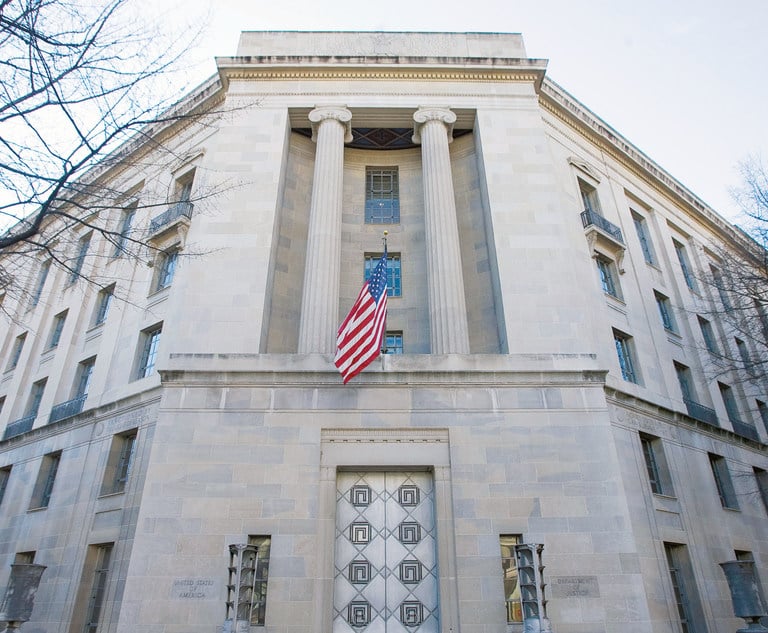White Hot Powder Gets Its Shot in Color Mark Case
Gunpowder Maker an American Success Story in TTAB ReversalSuccess in the American tradition demands the qualities of motivation, determination, willingness…
October 18, 2017 at 10:21 AM
4 minute read
The original version of this story was published on Law.com
Gunpowder Maker an American Success Story in TTAB Reversal
Success in the American tradition demands the qualities of motivation, determination, willingness to sacrifice, hard work, timing, and a true element of luck.
That's how gunpowder manufacturer and recent trademark applicant Hodgdon Powder Company prefaces its company history. Certainly several of these factors came into play in the company's success at the Trademark Trial and Appeal Board (TTAB).
In a rare and precedential color mark decision, the Board reversed a refusal to register Hodgdon's mark comprising the color white applied to gunpowder for “preformed gunpowder charges for muzzleloading firearms,” finding that Hodgdon had successfully proven that its mark had acquired distinctiveness.
The examining attorney argued that the applied-for mark was not inherently distinctive and that Hodgdon's evidence of acquired distinctiveness was insufficient. Given the precedents in Wal-Mart Stores, Inc. v. Samara Bros. and in Qualitex Co. v. Jacobson Prods. Co., which held that marks comprised of a single color alone are never inherently distinctive, her first argument was clearly correct.
In its opinion in In re Hodgdon Powder Co., Inc., Serial No. 85947962 (June 30, 2016), however, the Board noted that gunpowder was almost always referred to as black powder. Hodgdon's witness backed this up by testifying that gunpowder has “always been gray or black.”
Determined and motivated, Hodgdon went on to explain that the white color of its gunpowder serves no purpose other than to identify its product, that the color white is not a natural by-product of the gunpowder manufacturing process, that there has been no other known use in the industry of the color white for gunpowder since the product was first developed by Chinese alchemists in the ninth century, and that the color white is not functional when used in connection with gunpowder.
This evidence led the Board to conclude that the color white is an anomaly contrary to consumers' expectations regarding the appearance of gunpowder.
To further support its application, Hodgdon filed a declaration attesting to substantially exclusive and continuous use of the color white for gunpowder for at least the five years preceding the filing date of its application. Hodgdon also put in some hard work at the winningly named 2014 SHOT Show in Las Vegas (SHOT stands for Shooting, Hunting, Outdoor Trade). It conducted an informal survey about its product and presented the results to the Board. The survey showed that over 90% of respondents stated that only one company makes white gunpowder. And that company is Hodgdon.
Hodgdon's advertising stated that its product, sold under the registered mark White Hots, is “The Only White Gunpowder.” The company reported that since first introducing the mark in 2008, its sales had exceeded $3.5 million. The examining attorney contended that Hodgdon's advertising was insufficient as “look for” evidence and did not establish that consumers viewed the proposed color mark as a source indicator for the identified goods. She also asserted that Hodgdon provided insufficient information about its survey methodology and participants, making the survey inadmissible.
The Board, however, found Hodgdon's advertising to be “effective 'look for' advertising.” As to the survey, the Board acknowledged that it would not be admissible in an inter partes proceeding, and standing alone would not establish acquired distinctiveness. However, the validity of the survey was immaterial in light of the Board's finding regarding the “look for” advertising.
Reviewing the totality of the evidence, the Board found that the color white for Hodgdon's gunpowder had acquired distinctiveness, and so reversed the refusal to register.
And here's where Hodgdon's “true element of luck” comes in: You can probably count on one hand the number of single color cases that the TTAB has allowed to register in the last five years. The Board and the courts in general do not appear to be sympathetic to owners of single color trademarks, and require a substantial amount of evidence to find that single color marks have acquired distinctiveness.
This case is instructive to future would-be single-color trademark owners trying to prove acquired distinctiveness. I would not go so far as to say it signals a new trend that single-color marks are going to be allowed to register more often. But in this case, the fact that no other gunpowder manufacturers make white gunpowder probably outweighed any lack of enthusiasm the Board might have for single-color applicants.
So Hodgdon had its shot—and hit the target on the second try. An American success story, indeed.
This content has been archived. It is available through our partners, LexisNexis® and Bloomberg Law.
To view this content, please continue to their sites.
Not a Lexis Subscriber?
Subscribe Now
Not a Bloomberg Law Subscriber?
Subscribe Now
NOT FOR REPRINT
© 2025 ALM Global, LLC, All Rights Reserved. Request academic re-use from www.copyright.com. All other uses, submit a request to [email protected]. For more information visit Asset & Logo Licensing.
You Might Like
View All

Advance Auto Parts Hires GC Who Climbed From Bottom to Top of Lowe's Legal Department
2 minute read

Compliance With EU AI Act Lags Behind as First Provisions Take Effect
Trending Stories
- 1Parties’ Reservation of Rights Defeats Attempt to Enforce Settlement in Principle
- 2ACC CLO Survey Waves Warning Flags for Boards
- 3States Accuse Trump of Thwarting Court's Funding Restoration Order
- 4Microsoft Becomes Latest Tech Company to Face Claims of Stealing Marketing Commissions From Influencers
- 5Coral Gables Attorney Busted for Stalking Lawyer
Who Got The Work
J. Brugh Lower of Gibbons has entered an appearance for industrial equipment supplier Devco Corporation in a pending trademark infringement lawsuit. The suit, accusing the defendant of selling knock-off Graco products, was filed Dec. 18 in New Jersey District Court by Rivkin Radler on behalf of Graco Inc. and Graco Minnesota. The case, assigned to U.S. District Judge Zahid N. Quraishi, is 3:24-cv-11294, Graco Inc. et al v. Devco Corporation.
Who Got The Work
Rebecca Maller-Stein and Kent A. Yalowitz of Arnold & Porter Kaye Scholer have entered their appearances for Hanaco Venture Capital and its executives, Lior Prosor and David Frankel, in a pending securities lawsuit. The action, filed on Dec. 24 in New York Southern District Court by Zell, Aron & Co. on behalf of Goldeneye Advisors, accuses the defendants of negligently and fraudulently managing the plaintiff's $1 million investment. The case, assigned to U.S. District Judge Vernon S. Broderick, is 1:24-cv-09918, Goldeneye Advisors, LLC v. Hanaco Venture Capital, Ltd. et al.
Who Got The Work
Attorneys from A&O Shearman has stepped in as defense counsel for Toronto-Dominion Bank and other defendants in a pending securities class action. The suit, filed Dec. 11 in New York Southern District Court by Bleichmar Fonti & Auld, accuses the defendants of concealing the bank's 'pervasive' deficiencies in regards to its compliance with the Bank Secrecy Act and the quality of its anti-money laundering controls. The case, assigned to U.S. District Judge Arun Subramanian, is 1:24-cv-09445, Gonzalez v. The Toronto-Dominion Bank et al.
Who Got The Work
Crown Castle International, a Pennsylvania company providing shared communications infrastructure, has turned to Luke D. Wolf of Gordon Rees Scully Mansukhani to fend off a pending breach-of-contract lawsuit. The court action, filed Nov. 25 in Michigan Eastern District Court by Hooper Hathaway PC on behalf of The Town Residences LLC, accuses Crown Castle of failing to transfer approximately $30,000 in utility payments from T-Mobile in breach of a roof-top lease and assignment agreement. The case, assigned to U.S. District Judge Susan K. Declercq, is 2:24-cv-13131, The Town Residences LLC v. T-Mobile US, Inc. et al.
Who Got The Work
Wilfred P. Coronato and Daniel M. Schwartz of McCarter & English have stepped in as defense counsel to Electrolux Home Products Inc. in a pending product liability lawsuit. The court action, filed Nov. 26 in New York Eastern District Court by Poulos Lopiccolo PC and Nagel Rice LLP on behalf of David Stern, alleges that the defendant's refrigerators’ drawers and shelving repeatedly break and fall apart within months after purchase. The case, assigned to U.S. District Judge Joan M. Azrack, is 2:24-cv-08204, Stern v. Electrolux Home Products, Inc.
Featured Firms
Law Offices of Gary Martin Hays & Associates, P.C.
(470) 294-1674
Law Offices of Mark E. Salomone
(857) 444-6468
Smith & Hassler
(713) 739-1250






